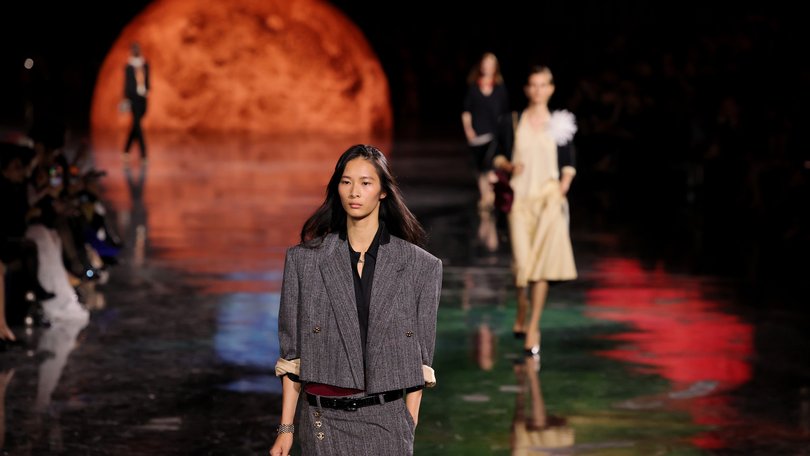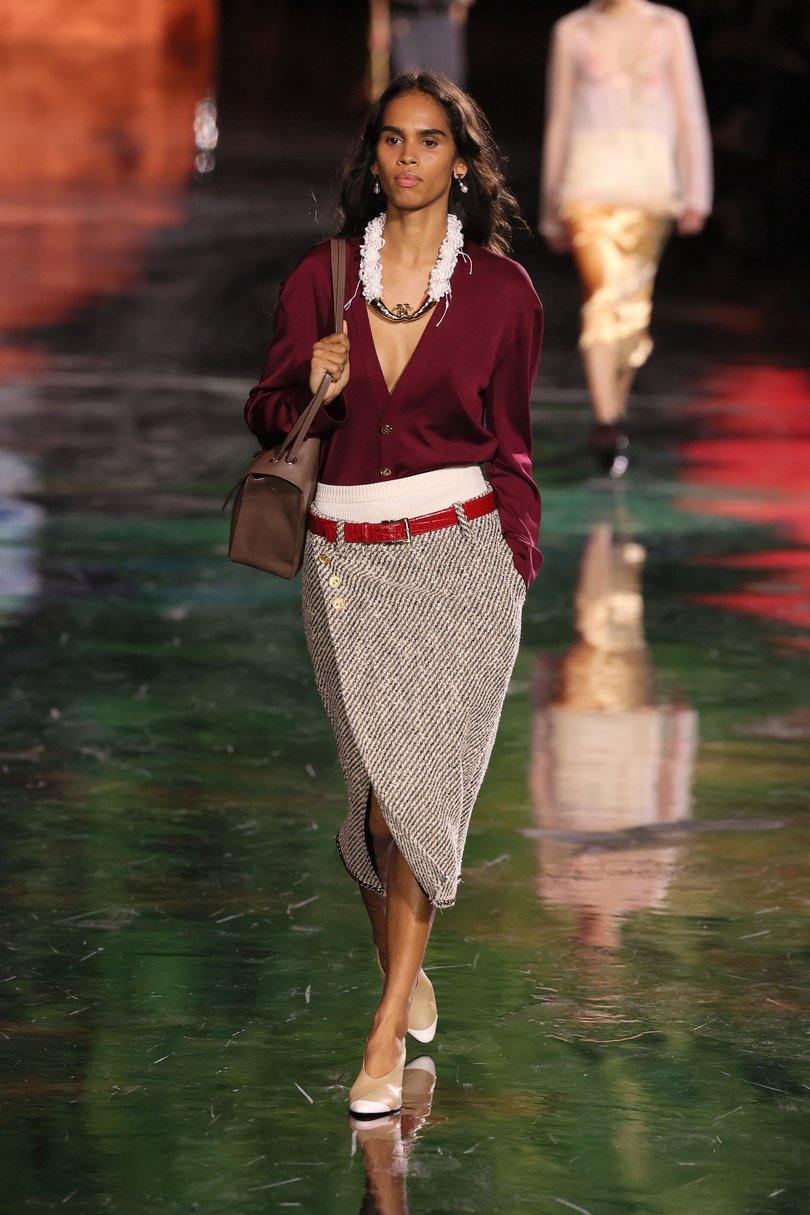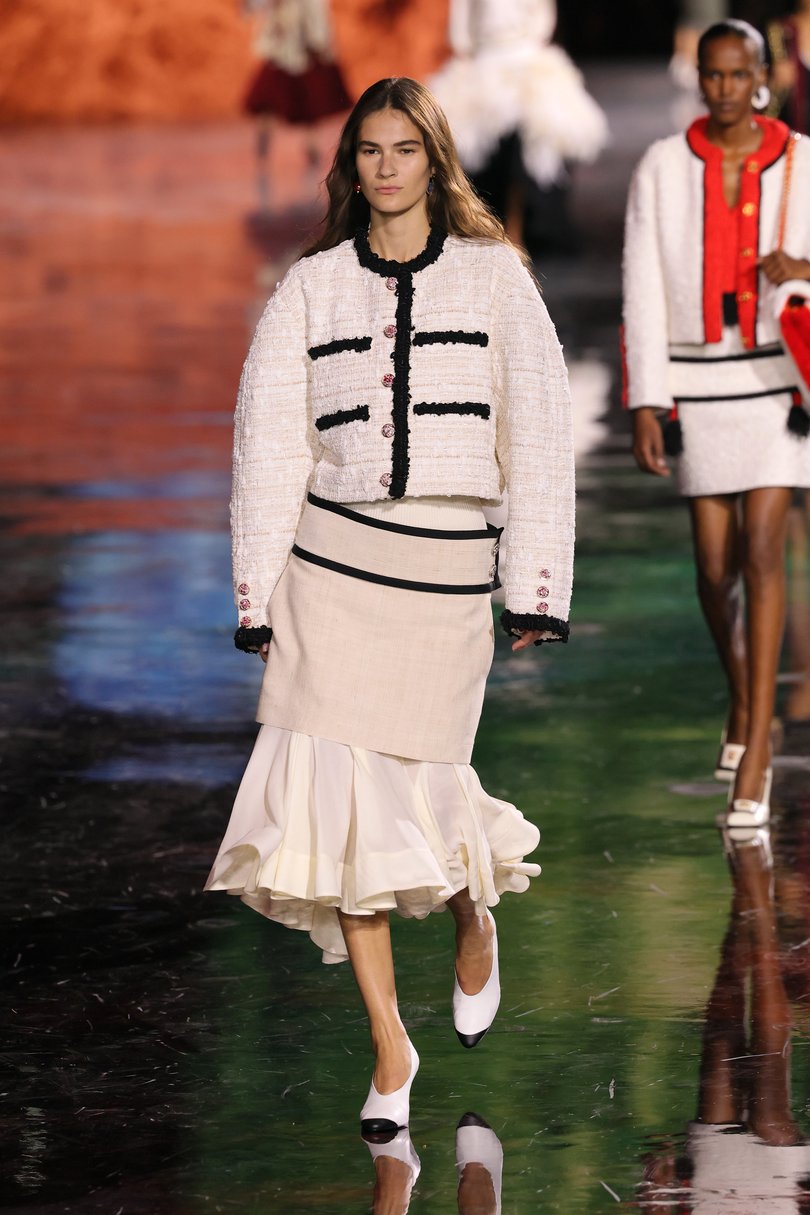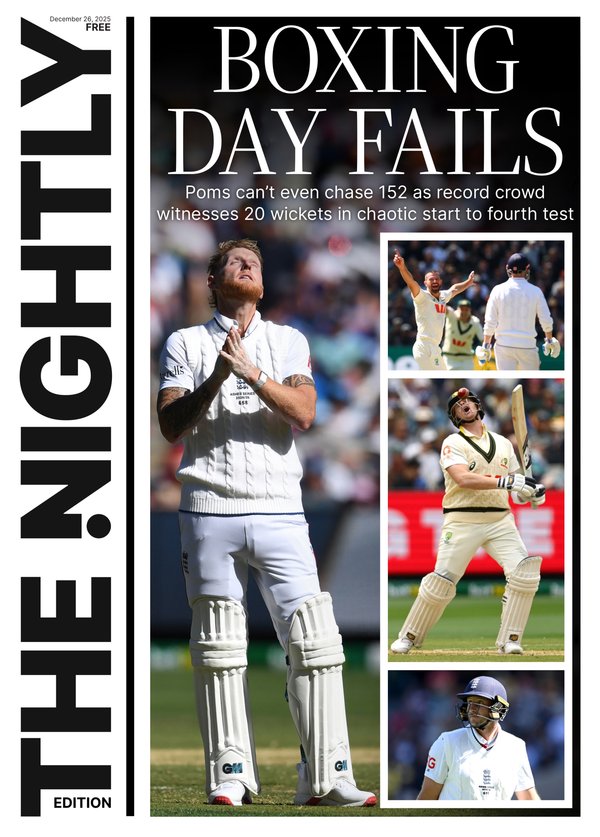THE WASHINGTON POST: The new Chanel’s post-Instagram clothes on display for Matthieu Blazy’s debut

Can a designer runway show - or, indeed, a single designer - change the way that women dress?
That is deceptively complex question. (Isn’t a designer’s job to help us solve the problem of what to wear?) But that was at the heart of Matthieu Blazy’s debut show at Chanel on Monday night, ostensibly the finale of the spring 2026 season.
And the collection he showed suggested that, whoa - Blazy just might have the potential be that influential.
Sign up to The Nightly's newsletters.
Get the first look at the digital newspaper, curated daily stories and breaking headlines delivered to your inbox.
By continuing you agree to our Terms and Privacy Policy.As this season of alleged “big change” comes to a close, it’s clear that most of what’s presented at Fashion Week has little to do with the outside world. It neither reflects broader social, political or economic realities, nor does it say much about the inner workings of a woman’s daily life.
Instead, we’ve gotten a lot of clothes that mean nothing to anyone outside the few hundred people at these runway shows in Paris.
That may be why the social media commenters (and commentators) are increasingly hostile toward fashion: The industry begs for your attention, even as it offers little that is affordable or feels relevant.
Chanel has seen very little change over the past century - an irony for a brand founded on the principles of modernity, of liberating women from constricting garments and introducing sportswear that paralleled the speedy thirst for newness in the early 20th century.
Karl Lagerfeld, who designed the label for nearly 40 years, almost always made beautiful clothes, but they did more to transform fashion into popular culture than they did to make women’s lives easier, or intellectually and emotionally richer.
So it put great stock in Blazy, perhaps the most anticipated new name among the nearly 10 debuting this season. He came to Chanel from Italy’s Bottega Veneta, where he was creative director for three years. Known for his quiet, focused artistry, the 41-year-old French-Belgian made clothes with majestic artistry: technically fascinating but never arrogant.
What Blazy produced Monday were the first genuinely post-Instagram clothes. Even from the distance of the enormous runway, dotted with huge inflated planets, suns and moons, you could see the exacting, slightly masculine shoulder on a jacket - his new Chanel silhouette - and the intricate beadwork on slip skirts and blouses.
Most striking was the way things moved: jersey (an essential Chanel fabric that Lagerfeld rarely used) oozing across a skirt or a bodice, or enormous flowers flouncing on a skirt worn simply with a satin T-shirt.
The clothes, from gowns to skirt suits to wool tailoring, were sinewy. They moved, the silks and sequins grabbing the light as it fell across models in motion. This was pretty shocking: So much clothing over the past decade has been flat in feeling and shape, for optimal Instagramming.

When I raised my phone to take a picture or video, the effect didn’t really come across. These are not clothes for a woman who gets dressed to take a picture of herself. They have much more respect for her life than that.
In part, this appeared to be because the designer focused on an era much different than Lagerfeld did. The late designer took a pop art approach to Chanel, distilling the house to its tweed and gold-chain essence, and drawing primarily from the sensibility of Coco Chanel’s post-World War II comeback, when she made the tweed skirt suit into an image as synonymous with ladylike luxury as Coca-Cola is to American enterprise.
Blazy seized on Chanel’s obsession with movement and ease: sleeves pushed up to reveal soft, silken linings. Fancy pieces were worn with tops cut like T-shirts or sweatshirts (though done in much finer fabrics than cotton). Much of the collection was defined by a liquid understatement.
The high-pressure machine of social media attention has driven the way people dress today more than anything else. (It is the reason, for example, even “non-Instagram clothes” such as leggings or simple trousers or cashmere sweaters feel cheaper and more shoddily made: because they’re not produced for optimal selfie-taking.)
These clothes were not performative. Even a pair of “old-school Chanel” suits, worn with heaps of pearls in high Coco style, looked of a piece with the entirety of Blazy’s showing, rather than costumey, as Lagerfeld’s often (gleefully) did.

The last time a designer really said something about the way we dress may have been Phoebe Philo, when she began her tenure at Céline in 2008 and produced collections that spoke to women’s quotidian fantasies and daily routines in their easy, intellectual glamour.
That look remains everywhere today, including the Row, J. Crew and more. Now, most brands with truly modern ideas about women’s apparel are cult secrets: Philo’s new namesake brand, as well as Alaïa, Schiaparelli and the Row.
Chanel is a much bigger force - by many accounts, the largest in the world and for much of the world certainly synonymous with luxury and even fashion itself.
Coco Chanel loved to see her ideas disseminated and picked up by other, more affordable designers; she considered it a sign of success.
Women won’t start wearing pantsuits with strong shoulders and skirts covered in big flowers. But maybe shoppers and designers will begin to see how clothes can solve the problem of offering you lightness and flexibility, as well as pleasure, without the dowdy compromise of quiet luxury.
Through the enormity of its runway shows, the reach of its celebrity ambassadors and the sheer power of its brand, Blazy’s confident clothes for intelligent living may prove that fashion still has the power to change the way women see themselves.
© 2025 , The Washington Post
